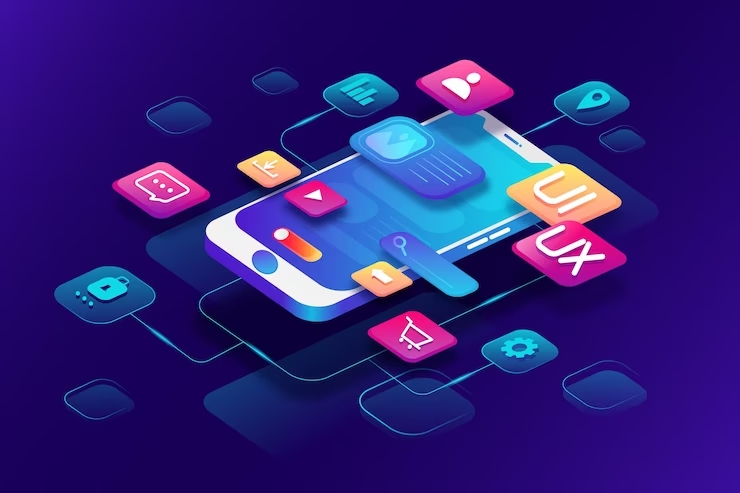As the demand for mobile applications continues to grow, more and more companies and people are exploring making their apps cross-platform. Several developers create applications for Android and iOS because of their widespread use. It’s not uncommon for developers to wish to port their program from one platform to another, even if it may be the only one accessible.
This article will cover the steps to transition from an iOS to an Android app. We’ll review what must be done, what resources are available, and what methods work best when converting an app.
Table of Contents
Step 1: Understand the Differences Between iOS and Android
To successfully port an app from iOS to Android, it is necessary first to get familiar with the specifics of each system. iOS and Android are two distinct mobile operating systems with distinctive design tenets, programming languages, and app development frameworks.
Design Principles:
- Apple’s Human Interface Guidelines (HIG) are used to create iOS applications emphasizing clear, unambiguous, and easy navigation.
- The design of Android applications is informed by Google’s Material Design Guidelines, which prioritize a sleek, minimalist aesthetic.
Programming Languages:
- Swift and Objective-C are the most common languages used to develop iOS apps.
- The Java and Kotlin programming languages are often used while creating Android applications.
App Development Frameworks:
- Apple’s Xcode is the development environment used to create iOS applications. It includes a set of tools for prototyping, coding, and testing.
- Several Android Studio development environment tools are used for the same purposes while creating, programming, and testing Android applications.
App developers looking to port their iOS apps to Android must know these differences. To create an app that looks and feels natural on Android, you must know how to design for both platforms and be fluent in both programming languages and app development frameworks.
Step 2: Analyze the iOS App
Step two thoroughly examines the original iOS app in porting iOS software to Android. Before making an Android version, you must learn about the app’s features, operation, and user interface.
The following are examples of items that need to be analyzed:
- App architecture: The framework of the program and how it makes use of controllers, models, views, and other elements.
- User interface: The app’s look includes how it’s put together and how color and typeface are used.
- User experience: The structure, operation, and navigation of the app as a whole.
- App functionality: All of the app’s capabilities, from its fundamental functions to its extras.
By dissecting the iOS app, you can determine what features must be reimplemented in the Android version. It will also provide light on the app’s functionality and how users engage with it.
Step 3: Recreate the User Interface
The third step in porting an app from iOS to Android requires remaking the app’s UI. The visual design of the app, known as the user interface, is crucial to the success of the app since it determines how users will engage with it.
There are a few things to keep in mind while redesigning the interface:
- Use Material Design guidelines: Android follows its design rules rather than iOS’s. To make an app that fits in seamlessly with Android, you should follow the Material Design principles.
- Convert iOS UI elements to Android UI elements: The buttons, text fields, and switches that make up the user interface on iOS and Android are constructed differently. Maintaining cohesion throughout the app necessitates porting over the iOS UI components to the Android platform.
- Use appropriate fonts and colors: Android has a color palette and typefaces distinct from Apple’s iOS. Use standard Android fonts and colors to make the app seem more at home on Android.
While it’s time-consuming, starting from scratch to design a user interface for an Android app is required if you want it to appear and behave like a native Android app.
Step 4: Rewrite the Code
The fourth step in convert iOS app to Android app is to rewrite the code.
To rewrite the code, one must first convert it from iOS to Android. As was previously said, Swift and Objective-C are the most popular languages for developing iOS applications, whereas Java and Kotlin are the most popular for developing Android apps.
Automated tools like converters and transpilers may be used for coding translation. Unfortunately, the code generated by these tools is sometimes of low quality, and it may need further fine-tuning before it can be used as intended.
Here are some things to keep in mind when you rewrite the code:
- Use Android-specific APIs: Android’s application programming interfaces (APIs) are distinct from iOS’s. If you want your app to function correctly on Android, you should utilize APIs designed for Android.
- Use the appropriate programming language: The two most popular languages for creating Android apps are Java and Kotlin. Your programming language choice should reflect your skill set and the project’s needs.
It might be easier to rewrite the code with prior experience with Android programming. To do this task, you may require the assistance of a professional Android developer.
An android development company can provide you with a team of skilled professionals specializing in Android development and have experience with iOS porting. This can be a great option if you seek comprehensive support throughout the porting process.
Step 5: Test the App
The fifth step of porting iOS software to Android is to put it through its paces. Testing is essential to guarantee that the app performs as expected and lives up to the expectations of its target audience.
While evaluating the app, you should consider the following:
- Test on multiple devices: Many Android gadgets exist, with specifications like display size, pixel density, and processor speed. You should test the app on numerous devices to verify it works appropriately on all devices.
- Performance test: The performance of an Android app may vary across devices due to hardware differences. It would be best to run performance tests on the app to ensure it works well across all devices.
- Compatibility test: There are many Android versions, each with capabilities and features. You should test the app for compatibility to ensure it works correctly on all Android versions.
Although it’s essential to ensure the app runs smoothly on Android, testing it can take a lot of time.
Guidelines for Making an Android Version of an iOS App
Some guidelines for porting an app from iOS to Android are as follows:
- Understand the differences between iOS and Android: To create an app that fits seamlessly with Android’s design language, one must know the distinctions between the platforms.
- Use Material Design guidelines: Android follows its design rules rather than iOS’s. To make an app that fits in seamlessly with Android, you should follow the Material Design principles.
- Test the app thoroughly: Testing is mandatory to guarantee the app’s proper operation on Android. The app must be put through its paces on various devices to ensure it runs smoothly and is compatible with all operating systems before release.
- Hire an experienced Android developer: If you’re still getting familiar with Android development, porting an iOS app to the platform can be difficult. You may require the assistance of a professional Android developer for this task. It’s essential to hire android developers who have experience with both iOS and Android platforms to ensure a thriving port.
- Keep the user in mind: The app will only be successful if it can provide what its users want. Keeping the user in mind during the conversion process will help ensure that the app is as useful and enjoyable on Android as on iOS.
Conclusion
It’s not easy to port an app from iOS to Android, but it might pay dividends by exposing your product to more users. To convert an iOS app to an Android app, you need to understand the differences between the two platforms, assess the iOS app, reconstruct the user experience, rewrite the code, and extensively test the app.
You can make an Android app that is on par with the iOS app in terms of value and user experience by adhering to best practices and focusing on the user.

